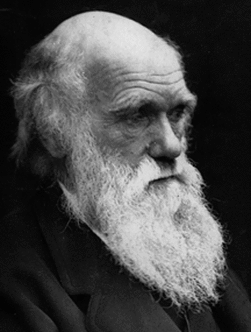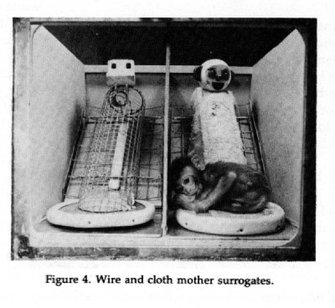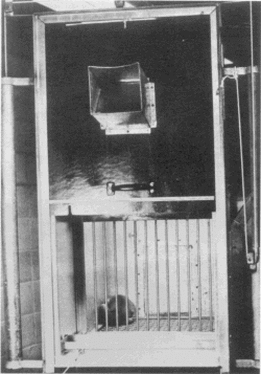This page is about the history of the debate. To see details into medical discoveries made with the use of animal testing see Advances
Greek philosophers Erasistratus and Aristotle were probably the first people to to experiment and dissect animals for scientific purposes in the third century b.c. Later in second that century in Rome, a physician named Galan did many experiments and is now know as " The Father of Vivisection".
One of the first scientific discoveries made with animals was William Harvey's observations about the circulatory system in the 1600's. In the 1700's Steven Hales was able to find a way of measuring blood pressure from horses. Animal experimentation began to become more common after its proven effectiveness and with many peoples acceptance of animal testing came just as many people against it. In 1865, Claude Bernard, considered the father of physiology and "prince of vivisection", wrote that "the science of life is a superb and dazzlingly lighted hall which may be reached only by passing through a long and ghastly kitchen." Bernard made animal testing part of the standard scientific method of the time. In 1876, the first animal protection law was put in place, The Cruelty to Animals Act.
Greek philosophers Erasistratus and Aristotle were probably the first people to to experiment and dissect animals for scientific purposes in the third century b.c. Later in second that century in Rome, a physician named Galan did many experiments and is now know as " The Father of Vivisection".
One of the first scientific discoveries made with animals was William Harvey's observations about the circulatory system in the 1600's. In the 1700's Steven Hales was able to find a way of measuring blood pressure from horses. Animal experimentation began to become more common after its proven effectiveness and with many peoples acceptance of animal testing came just as many people against it. In 1865, Claude Bernard, considered the father of physiology and "prince of vivisection", wrote that "the science of life is a superb and dazzlingly lighted hall which may be reached only by passing through a long and ghastly kitchen." Bernard made animal testing part of the standard scientific method of the time. In 1876, the first animal protection law was put in place, The Cruelty to Animals Act.
In America anti-vivisection beliefs were very
prevalent. In 1865, the American Society for the Prevention of
Cruelty to Animals (ASPCA) was founded. The American Anti-vivisection
society was founded in 1883.
The Beginning of the Modern Animal Rights Movement: Harlow's Monkey's
Beginning in 1955, Harry Harlow's series of experiments named The Nature of Love are accredited by many as the reason for the modern animal rights movement. Harlow did maternal deprivation experiments with rhesus monkeys. He started his experiments by taking new born monkeys away from their mother and putting them in cages with two surrogate mothers, one heated with cloth and the other wire with a feeding bottle. The baby monkeys clung to the cloth mother and only went over to the wire to feed. When the cloth mother had the bottle the baby never went to the wire. Before it was believed the bond between mother and offspring was derived from nursing, these results proved theories wrong and established the importance of creature comfort. When these monkeys grew up they had troubles mating and when they did have children did not care for their them properly.
One of the most controversial of the Harlow experiments was his partial and total isolation experiments nicknamed by him and his team "The Pit of Despair". Harlow described the results by saying this:" No monkey has died during isolation. When initially removed from total social isolation, however, they usually go into a state of emotional shock, characterized by ... autistic self-clutching and rocking. One of six monkeys isolated for 3 months refused to eat after release and died 5 days later. The autopsy report attributed death to emotional anorexia. ... The effects of 6 months of total social isolation were so devastating and debilitating that we had assumed initially that 12 months of isolation would not produce any additional decrement. This assumption proved to be false; 12 months of isolation almost obliterated the animals socially ..." Although the amount of time the monkeys were kept in isolation differed (mostly 6, 12, or 24 months), the longest Harlow's team kept a monkey in total isolation was fifteen years. No monkey's kept in more than three months of isolation every recovered; those that did were abnormal in behavior.
Those who criticized Harlow and his experiments claimed Harlow"kept this going to the point where it was clear to many people that the work was really violating ordinary sensibilities, that anybody with respect for life or people would find this offensive. It's as if he sat down and said, 'I'm only going to be around another ten years. What I'd like to do, then, is leave a great big mess behind.' If that was his aim, he did a perfect job." Others say his experiments produced "common sense results."
Harlow's discoveries have improved the way we treat and understand children who have been abused or institutionalized. "Harry Harlow's primate studies offered important insights into issues such as human maltreatment of infants and familial love." Ironically For his experiments he received the National Medal of Science (1967), and the Gold Medal from the American Psychological Foundation (1973).
Pictures top to bottom http://www.victorianweb.org/science/darwin/index.html
Harlow Harry, The Nature of Love. 1958 American Psychologist
Harlow Harry, The nature of Love. 1958 American Psychologist
Harlow Harry, The Nature of Love. 1958 American Psychologist
Harlow Harry, The nature of Love. 1958 American Psychologist



